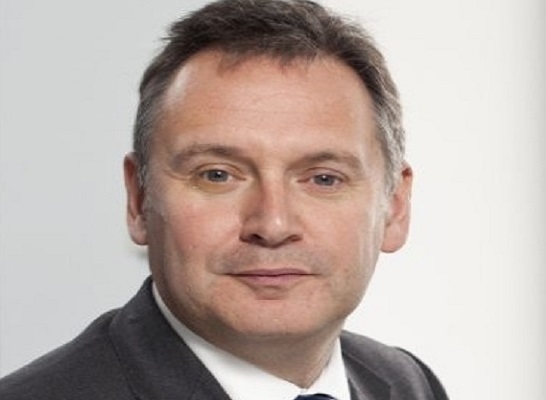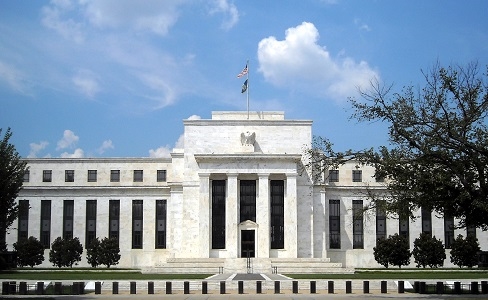ANALYSIS: Eurex targets buy-side with latest total return future

Eurex is launching on Monday the German venue’s latest total return future, adding to the group’s existing coverage of key European, British and emerging market blue-chip indices.
Frankfurt-based Eurex launches on Monday a total return future based on the Stoxx Europe 600 index, a broad-based list of European companies that includes the largest stocks in the region such as GSK, AstraZeneca, Roche and Novo Nordisk.
Stuart Heath, director Product Design, Equity & Index derivatives at Eurex, told FOW: “The use of that index is growing significantly. We’ve seen fantastic growth in other derivatives, options in particular, but futures as well, and the key reason behind that is that it’s a broad-based European index that covers not just the Eurozone but Denmark, Switzerland and the UK among others.”
Eurex’s Stoxx Europe 600 index option traded 3.77 million lots in the first eight months of this year, according to FOW Data, which was up 137% on the volume in the same period last year.
The options contract, made available in 2010, has reported this year its six busiest months ever, culminating in 685,200 lots traded in August, which was its best single month on record and up nearly three times on August last year, according to FOW Data.
The exchange’s Stoxx Europe 600 future has also performed well with trading volume up 8% in the year to the end of last month to just short of 16 million lots, according to FOW Data.
Heath continued: “Now is the right time to launch because we have growth in the index itself and particular use-cases where the total return future would be of use, primarily because, with custom baskets, you have to incorporate financing costs and this product allows you to hedge those financing costs.”
Total return futures are an innovative exchange-traded version of the total return swap which have proved popular among hedge funds by replicating the performance of an index, including its income and capital gains from dividends and overnight lending in the repo market.
Eurex already has a few index total return futures, of which the first to become available was the Euro STOXX 50 index TRF which launched in 2016 and is now the group’s most-traded TRF. The German exchange also has TRFs on the FTSE 100 index and three MSCI indices.
Heath said, however, the new Stoxx Europe 600 contract is functionally different to the exchange’s established TRFs. “The key difference for this product is that the target market is more banks hedging buy-side trades or the buy-side itself, and that involves a slower sales cycle. This product will be used for directional hedging and financing costs which is a different use-case again from some of the current index TRF products we have which are primarily to isolate repo risk.”
The focus on the buy-side, which tends to be slower to adopt new products, has influenced Eurex’s modest expectations about trading activity in the first months after launch, which will be supported by an incentive scheme.
“We will have a liquidity provision scheme and we are going through the regulatory process for approval in the US and we are in discussions with market participants about that,” Heath said.
Heath draws a parallel between the Stoxx Europe 600 TRF and the three MSCI TRFs launched in March which have yet to take off: “We do have prices but we haven’t seen trades to date. That’s a similar target market to this new product.”
Overall, Eurex’s total return futures trading suite was down by trading volume in August, with its most liquid contract, the Euro Stoxx 50 TRF, reporting volume off 24% last month compared to August 2023.
Heath said: “The market had a blip at the beginning of August. Total return futures are not a fast-moving liquid product which you might use as an instant hedge; you would use the regular EuroStoxx 50 futures.”
The Eurex director continued: “We have also seen a change in the financing costs within the equity index market in Europe. It’s not obvious because it’s embedded in the roll costs of the future but it is there. We’ve heard it’s around 50 basis points above the benchmark ESTR rate for example so that has made the entry point for the total return future not so attractive at the front end of the curve.”
Heath concluded: “Volumes were down but open interest has crept up steadily, so it is a viable product. It is not the same product as regular futures like the EuroStoxx 50, it has different use-cases basically.”
Found this useful?
Take a complimentary trial of the FOW Marketing Intelligence Platform – the comprehensive source of news and analysis across the buy- and sell- side.
Gain access to:
- A single source of in-depth news, insight and analysis across Asset Management, Securities Finance, Custody, Fund Services and Derivatives
- Our interactive database, optimized to enable you to summarise data and build graphs outlining market activity
- Exclusive whitepapers, supplements and industry analysis curated and published by Futures & Options World
- Breaking news, daily and weekly alerts on the markets most relevant to you



